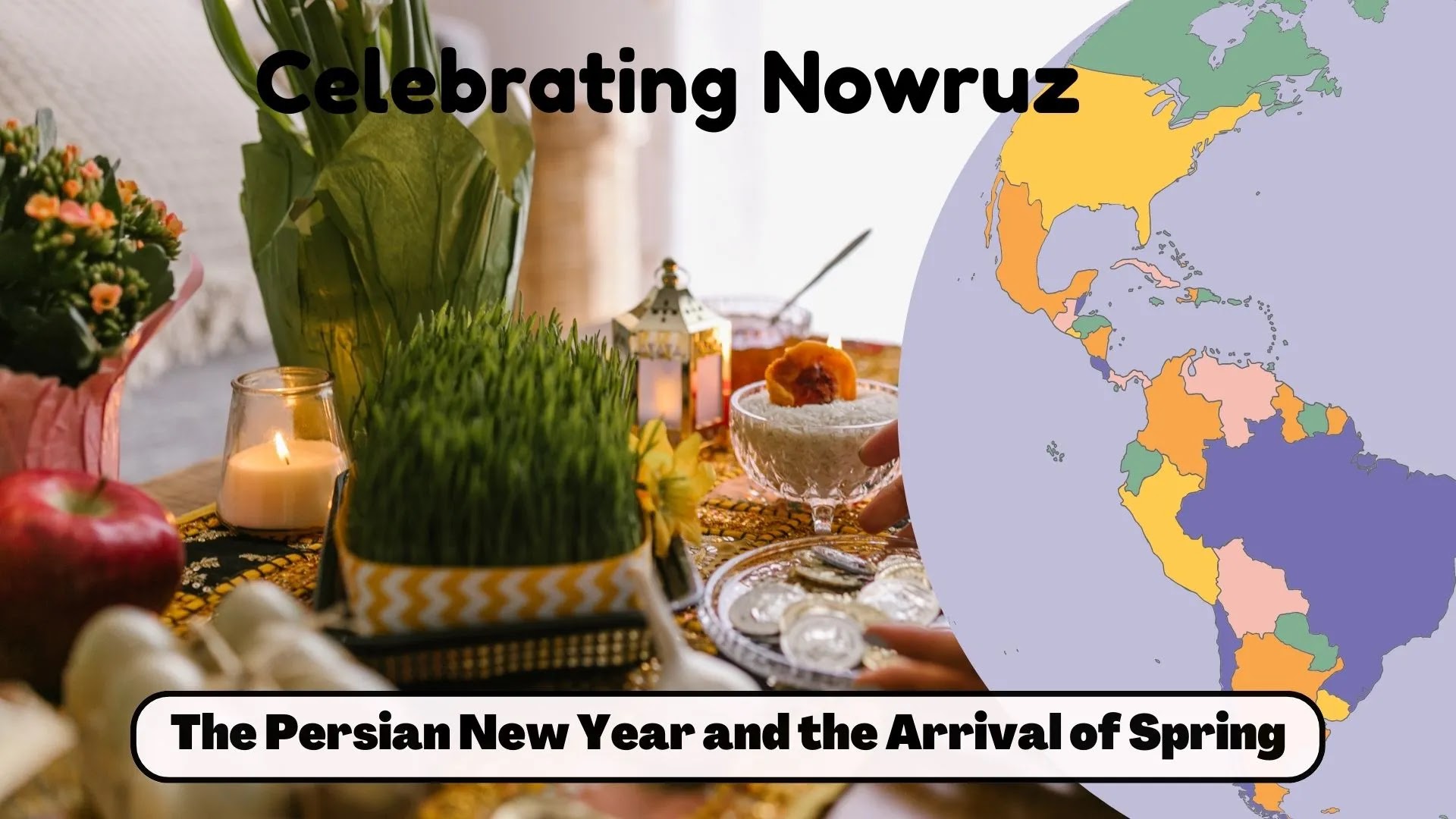The Persian New Year and the Arrival of Spring
Welcome to our comprehensive guide to Nowruz, the Persian New Year! We are thrilled to celebrate this joyous occasion with you and provide you with everything you need to know about this ancient and vibrant tradition.
Nowruz, which means "new day" in Persian, marks the first day of spring and the beginning of a new year in the Iranian calendar. It is celebrated on the day of the vernal equinox, which typically falls on March 20th or 21st. This year, we join millions of people around the world in celebrating Nowruz on March 21st.
History and Significance of Nowruz
Nowruz has been celebrated for over 3,000 years and is deeply rooted in Persian culture. The holiday has its origins in the ancient Zoroastrian religion, which was the dominant religion of Persia before the arrival of Islam.
One of the most important traditions of Nowruz is the setting up of the Haft Seen, a table that is decorated with seven symbolic items, each of which begins with the Persian letter "sin". These items include sabzeh (wheat or lentil sprouts representing rebirth), samanu (a sweet pudding made from germinated wheat symbolizing affluence), senjed (dried fruit symbolizing love), sir (garlic symbolizing health), sib (apple symbolizing beauty and health), somaq (sumac berries symbolizing sunrise and the spice of life), and serkeh (vinegar symbolizing patience and age).
Another popular tradition during Nowruz is the practice of spring cleaning or "shaking the house," in which families clean their homes from top to bottom in preparation for the new year. It is believed that by doing so, they are sweeping away the old year and making way for the new.
Traditions and Celebrations of Nowruz
Nowruz is a time for celebration and festivities, with events taking place all over the world. One of the most popular events is the Chaharshanbe Suri, or Red Wednesday, which takes place on the eve of the last Wednesday before Nowruz. During this event, people light fires and jump over them as a way of purifying themselves and welcoming the new year.
In Iran, the celebrations continue for thirteen days, with families and friends visiting each other's homes, exchanging gifts, and feasting on traditional dishes such as sabzi polo mahi (herb rice with fish) and ash-e reshteh (a thick soup made with noodles and herbs).
Nowruz is not only celebrated in Iran but also in other parts of the world, including Central Asia, the Caucasus, and parts of South Asia. In Afghanistan, for example, Nowruz is celebrated with the same enthusiasm and joy as in Iran, with people cleaning their homes, visiting friends and family, and feasting on traditional dishes.
In Tajikistan, Nowruz is a national holiday and is celebrated for two weeks, with people gathering in parks and public places to participate in music, dance, and poetry performances. In Azerbaijan, the holiday is known as Novruz Bayrami, and celebrations include the preparation of traditional sweets and the decoration of homes with colorful carpets and flowers.
In addition to the Haft Seen and other traditional practices, Nowruz is also celebrated with music, dancing, and poetry. People often gather together to listen to live music and to dance to the beat of the daf, a large frame drum that is played during celebrations.
Nowruz is also a time for reflection and renewal, with many people taking the opportunity to make resolutions and set goals for the coming year. It is a time for forgiveness and reconciliation, with people seeking to repair broken relationships and to start fresh.
Frequently Asked Questions (FAQs)
Q: What is Nowruz?
A: Nowruz is the Persian New Year, celebrated on the vernal equinox, which usually falls on March 20th or 21st.
Q: What is the significance of Nowruz?
A: Nowruz symbolizes renewal and rebirth. The festival marks the end of the old and the beginning of the new, a time for people to reflect on their past year and set intentions for the upcoming one.
Q: How is Nowruz celebrated?
A: Nowruz is celebrated with a variety of traditions, including spring cleaning, the Haft-Seen table setting, traditional meals, gift-giving, and cultural activities such as dancing and poetry recitation.
Conclusion
In conclusion, Nowruz is a rich and diverse celebration that has been passed down through generations for thousands of years. It embodies the values of renewal, hope, and joy, and it provides a platform for cultural exchange and unity.
Nowruz is not just a celebration; it is a way of life for many Persians around the world. The festival is deeply rooted in Persian culture and is a time for families and friends to come together and reconnect with their heritage. It is a time to celebrate the beauty of nature, the joys of life, and the hope of a new beginning.
One of the most important traditions of Nowruz is the Haft-Seen, a table setting that is rich in symbolism and significance. The table is decorated with seven items, each representing a different aspect of life. The items are carefully chosen for their meaning and include Sabzeh, which represents rebirth and renewal, and Samanu, which symbolizes wealth and prosperity.
Another important tradition of Nowruz is the Chaharshanbe Suri, which takes place on the last Wednesday of the year. This is a night of fire and fun, where people jump over bonfires to purify themselves and ward off evil spirits. It is a time to let go of the past and prepare for the new year.
Nowruz is celebrated by Persians all around the world, and each community has its own unique customs and traditions. In Iran, the festival is celebrated for 13 days, with the last day being called Sizdah Bedar. On this day, families go on picnics and spend time outdoors, enjoying the beauty of nature and the company of loved ones.
In Afghanistan, Nowruz is a national holiday and is celebrated with great fervor. People wear new clothes, decorate their homes, and prepare traditional dishes to share with family and friends. The festival is also celebrated in Central Asia, where it is known as Navruz, and in Azerbaijan, where it is known as Novruz.
Nowruz has become an important festival for Persians around the world, and its significance continues to grow. In 2009, it was added to the UNESCO List of Intangible Cultural Heritage, which recognizes its importance to the world's cultural heritage. The festival has also been embraced by non-Persian communities, who recognize its message of renewal, hope, and joy.
In conclusion, Nowruz is a beautiful festival that celebrates the start of spring, renewal, and rebirth. It is deeply rooted in Persian culture and is celebrated by millions of people around the world. Its customs and traditions continue to evolve, but its message of hope, renewal, and joy remains the same. As we celebrate this year's Nowruz, let us reflect on the past year, set intentions for the upcoming one, and embrace the beauty of life and nature. Happy Nowruz!






0 Comments